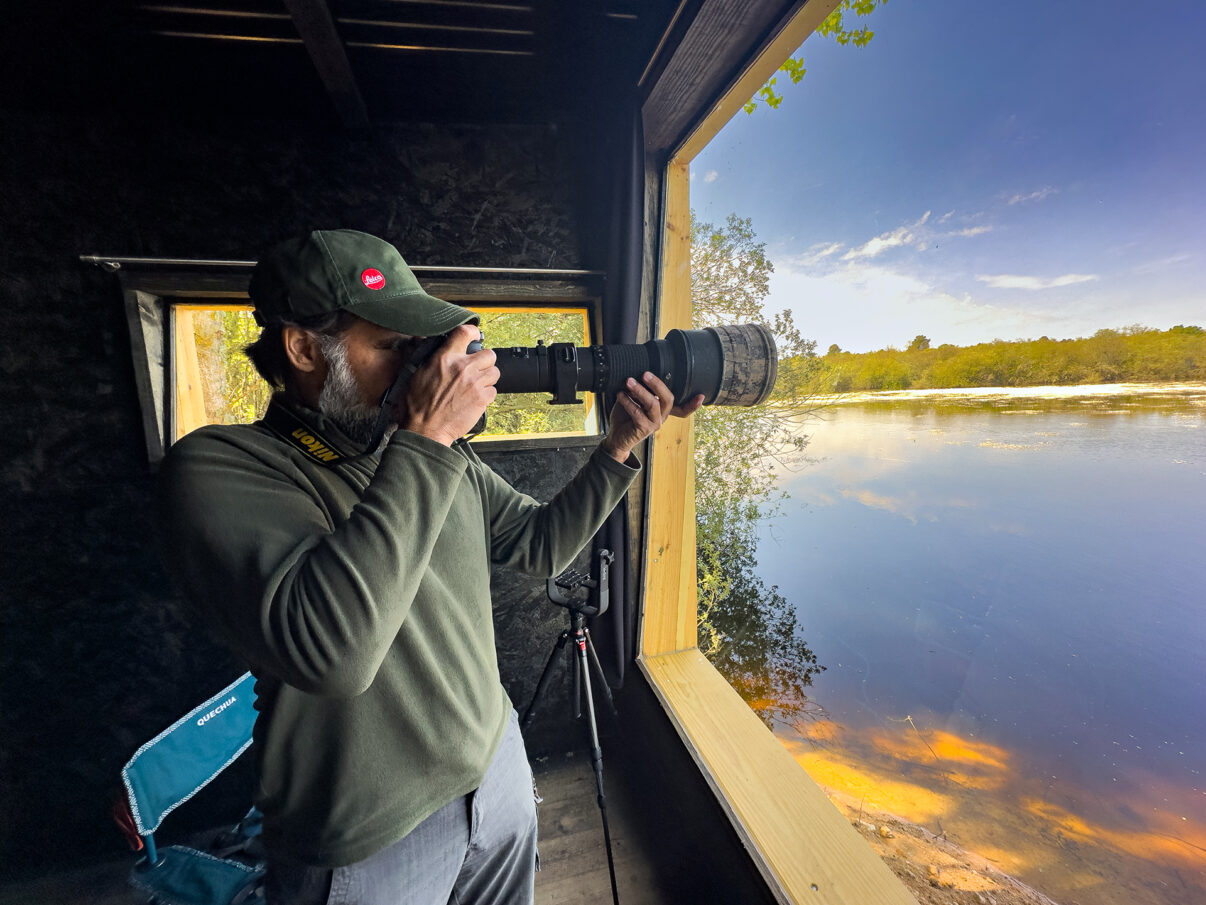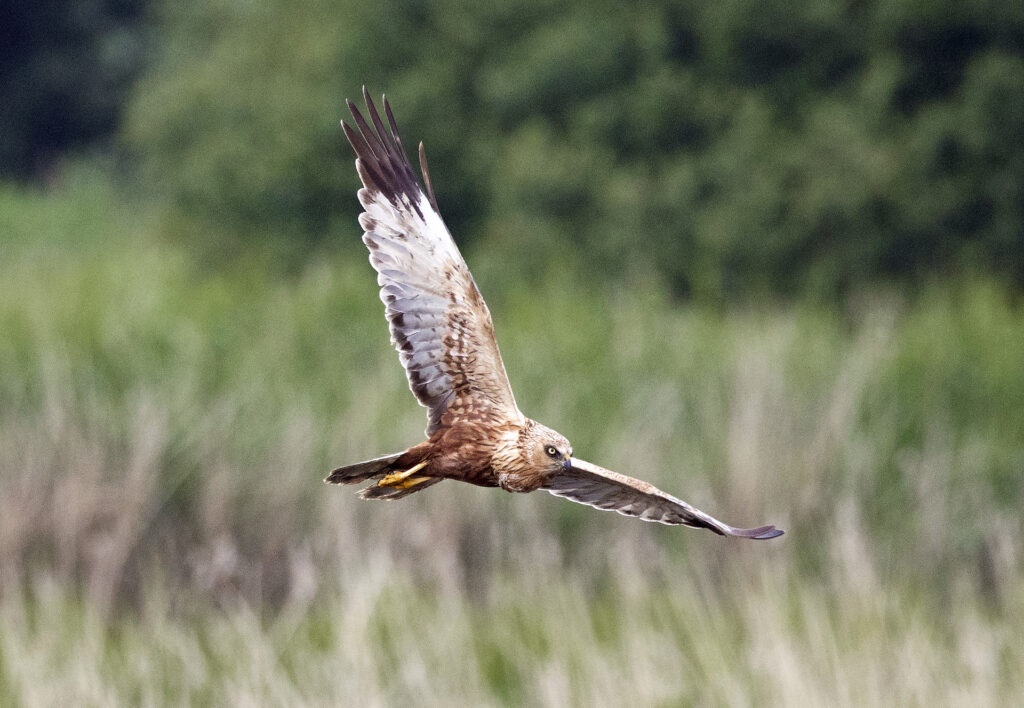Rewilding efforts are now supporting wildlife comeback in Portugal’s Greater Côa Valley. The first of a network of wildlife watching hides has just opened in the landscape, providing visitors with an exciting window onto this recovery and supporting the development of nature-based tourism.

An exciting step forward
 Fancy shooting a stunning image of a majestic black stork or a dazzling European bee-eater? How about a close encounter with an otter or European pond turtle? Wildlife enthusiasts and nature lovers will be delighted to hear that Rewilding Portugal has just opened its first wildlife watching hide in the Paul de Toirões rewilding site, on the eastern edge of the Greater Côa Valley rewilding landscape, between Almeida and Sabugal.
Fancy shooting a stunning image of a majestic black stork or a dazzling European bee-eater? How about a close encounter with an otter or European pond turtle? Wildlife enthusiasts and nature lovers will be delighted to hear that Rewilding Portugal has just opened its first wildlife watching hide in the Paul de Toirões rewilding site, on the eastern edge of the Greater Côa Valley rewilding landscape, between Almeida and Sabugal.
The opening of the hide is great news for the local nature-based economy, with more hides set for construction in Paul de Toirões, and across Rewilding Portugal’s other rewilding sites. These will all be accessible through services offered exclusively by members of the Wild Côa Network – a thriving nature-based business network set up by Rewilding Portugal in the Greater Côa Valley in early 2021. A percentage of every hide booking fee will be used to support ongoing rewilding efforts.
“This is a hugely exciting step forward for rewilding and nature-based tourism in the landscape,” says Rewilding Portugal team leader Pedro Prata. “This hide and the ones to follow will allow visitors to witness first-hand the ongoing wildlife comeback that our rewilding efforts are supporting. They will help people to reconnect with the wild, promote rewilding, and enable local businesses and communities to benefit financially from nature recovery.”

A flourishing site for wildlife
The Rewilding Portugal team are establishing a growing number of rewilding sites within the Greater Côa Valley, as they develop a 120,000-hectare wildlife corridor to connect the Malcata mountain range in the south with the larger Douro Valley in the north. As ecological stepping stones, these sites enhance landscape connectivity. They also act as refuges where a diverse range of wildlife species can recover and thrive.
Rewilding Portugal’s efforts to restore Paul de Toirões – a site which was once heavily mined – began in 2022. Many of the excavations here have filled with water, creating a complex of lagoons, channels, and ponds that are home to a burgeoning array of resident and migratory wildlife species. The acquisition and protection of the site means wildlife here is no longer disturbed by people hunting and fishing, or by livestock, which means birds and mammals are becoming less elusive and easier to see.

Views to a thrill
The Paul de Toirões hide offers a privileged and unrestricted view of a lagoon where many birds from the Greater Côa Valley and farther afield are either resident or stop by.
“The new hide, which is focused primarily on aquatic bird species, is opening in time for the final summer migration,” explains Pedro Prata. “We are seeing an increasingly diverse range of birds use the oasis of Paul de Toirões as a place to recharge while they are on the move.”
“Paul de Toirões is a really interesting and tranquil rewilding site,” adds Fernando Romão, owner of wildlife-watching company Wildlife Portugal, which as a Wild Côa Network business will manage the hide under an agreement signed with Rewilding Portugal. “The hide offers visitors, who will be accompanied by one of our guides, the opportunity to observe and photograph birds comfortably, in a way that avoids disturbance. Key species include black storks, marsh harriers, and kingfishers, while we’ve also seen otters passing through.”

Scaling up
The Paul de Toirões hide was paid for by Rewilding Portugal, with finance provided by Rewilding Europe Capital, Rewilding Europe’s enterprise loan facility. Rewilding Europe Capital provides commercial loans and repayable grants to businesses located in and around Rewilding Europe’s portfolio of rewilding landscapes, with the goal of amplifying rewilding impact, supporting the development of nature-based economies, and piloting new ways of doing new business that are good for nature and people.
The hide was also designed and built by Rewilding Portugal, with consultancy provided by Italian wildlife tourism company SKUA Nature Group, with which Rewilding Europe has a technical partnership.
Moving forwards, four more hides are slated for construction in Paul de Toirões. When the entire hide network is operational by the summer of 2025, multi-day and night hide experiences will be offered. The knowledge and expertise gained from building and managing these hides will be invaluable as Rewilding Portugal looks to develop wildlife watching at other Greater Côa Valley rewilding sites. All of the hides will be rented to Wild Côa Network members such as Wildlife Portugal, with the profits used to develop further hides and nature-based tourism infrastructure in the landscape.

The bigger picture
Today, more and more people want to connect with European wild nature. Europe may not yet have the reputation of Africa as a top wildlife watching destination, but it is home to a wide range of exciting and iconic animals – from bears, bison, and beavers to lynx, wolves, and vultures. As populations of many of these species continue to recover across Europe, opportunities for wildlife watching – and establishing wildlife-watching hides – are burgeoning.
Wildlife watching hides can benefit rewilding in many ways. Earlier this year, Rewilding Europe published a best practice manual which provides guidance for businesses and initiatives that want to develop and operate them.

Book your Paul de Toirões experience
The first Paul de Toirões wildlife watching hide is now open and available for booking, for groups of between one to six people. It can be booked through either Rewilding Portugal or Wildlife Portugal. The Wildlife Portugal website provides more information about the hide experience and location, recommended clothing, equipment, and local accommodation, and equipment hire, as well as outlining rules for hide usage.
Helping nature-based businesses
If you are a European entrepreneur with a desire to enhance wild nature, Rewilding Europe Capital may be able to help you realise your ambition. For more information, please contact Rewilding Europe’s Conservation Finance Expert, Daniel Veríssimo.
Invaluable support
Rewilding Portugal’s efforts in the Greater Côa Valley are supported by the Endangered Landscapes & Seascapes Programme.
Rewilding Europe’s work across our rewilding landscapes is supported by a wide range of highly valued partners. We would particularly like to acknowledge those providing core funding – notably the Ecological Restoration Fund, the Dutch Postcode Lottery, WWF-Netherlands, and Arcadia. Their longstanding support plays a critical role in enabling us to deliver and scale up rewilding impact.
